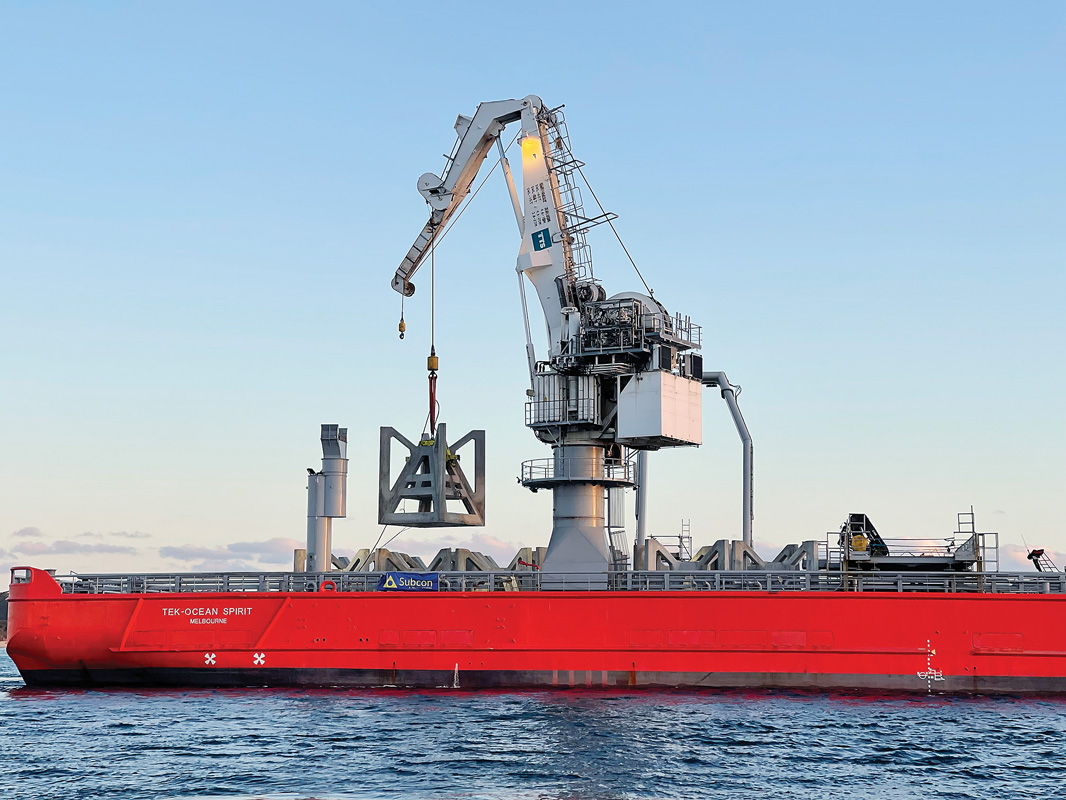THE state government has been accused of ignoring the “unique” environmental qualities of where an artificial reef has been installed off Point Nepean.
Designed to be a lure for kingfish, the reef has been put in place despite calls for it to be delayed – including from Mornington Peninsula Shire Council – until further studies had been carried out.
In the days following news that the 16 purpose-built concrete “reef modules” had been installed on the seabed their main attraction was criticism.
Conservationists and dolphin watching business operators have accused the state government and the Department of Environment, Land, Water and Planning of not listening to them and only acting on behalf of the recreational fishing lobby.
“There is no other temperate marine ecosystem that is comparable in Australia and that is part of the reason why Point Nepean and Point Lonsdale have marine national parks,” Louise Page said.
“It is also important to have a significant buffer area around these areas to try and preserve the integrity of these sensitive areas.
“The introduction of a foreign structure for the sole purpose of catching a specific species of fish in near proximity to a marine national park is counter intuitive and illogical.”
Futurefish Foundation director David Kramer, who says he thought up the idea to build an artificial reef specifically to attract kingfish, says there was nothing wrong with the process leading up to its installation (“New reef a lure for kingfish” The News 31/5/22).
He has described opponents to the artificial reef – one of 14 deployed in Port Phillip over the past 15 years – as “alarmists rather than environmentalists … [who] actually have no idea what they are talking about”.
Page says the Point Nepean National Park part of the bay “is much more eco-sensitive than other parts and therefore needed much more consideration than was given by the Victorian Fisheries Authority and DELWP.
“Apart from the proposed location being close to the marine national park, the dolphin sanctuary and habitat, gannet feeding grounds and Portsea Hole, it is an area populated by natural reefs and marine habitat including unique cold water coral. Why was none of this taken account of?”
The VFA has said the reef was laid in a sand basin after detailed hydrographic surveys showed “an absence of algae and epibiota”.
The chosen site was “equally away from shipwrecks, marine parks, the emergency anchorage and the Point Nepean dolphin sanctuary and “adding structure … will increase marine diversity”.
The VFA said the location of the kingfish reef was made in consultation with DELWP, the Port Phillip harbourmaster, the Port of Melbourne and Victorian Ports Corporation.
Page described the reef as “another nail in the coffin for our environment and yet another example of flawed and inadequate environmental regulations” which fell “well short of community expectations in regard to any consultation process”.
Mechelle Cheers said no studies or reports had been released by the VFA or DELWP to show how the reef would impact surrounding eco systems or marine life.
She questioned why “the Premier Daniel Andrews and the Labor Party have autocratically given fishing lobby groups total control over what happens in this part of the Bay?”
“Consulting only fishing lobbyists about an artificial reef for the pleasure of recreational fishers in such a well-loved location to the exclusion of all other stakeholders, such as eco-tourism operators, community members and marine conservationists is inequitable and unethical,” Cheers said.
Tour operator Judith Muir said the area near Point Nepean was unique and consideration should have been given to the reef’s effect on water movement and turbulence, the displacement caused by an introduced species (kingfish), impacts of dense fishing and abandoned fishing lines entangling marine mammals and sea birds and kingfish encouraging predators, such as sharks.
“Fishers, by and large, are not responsible citizens when it comes to littering, yet they expect the bay to offer up its harvest to them,” she said.
First published in the Southern Peninsula News – 7 June 2022


